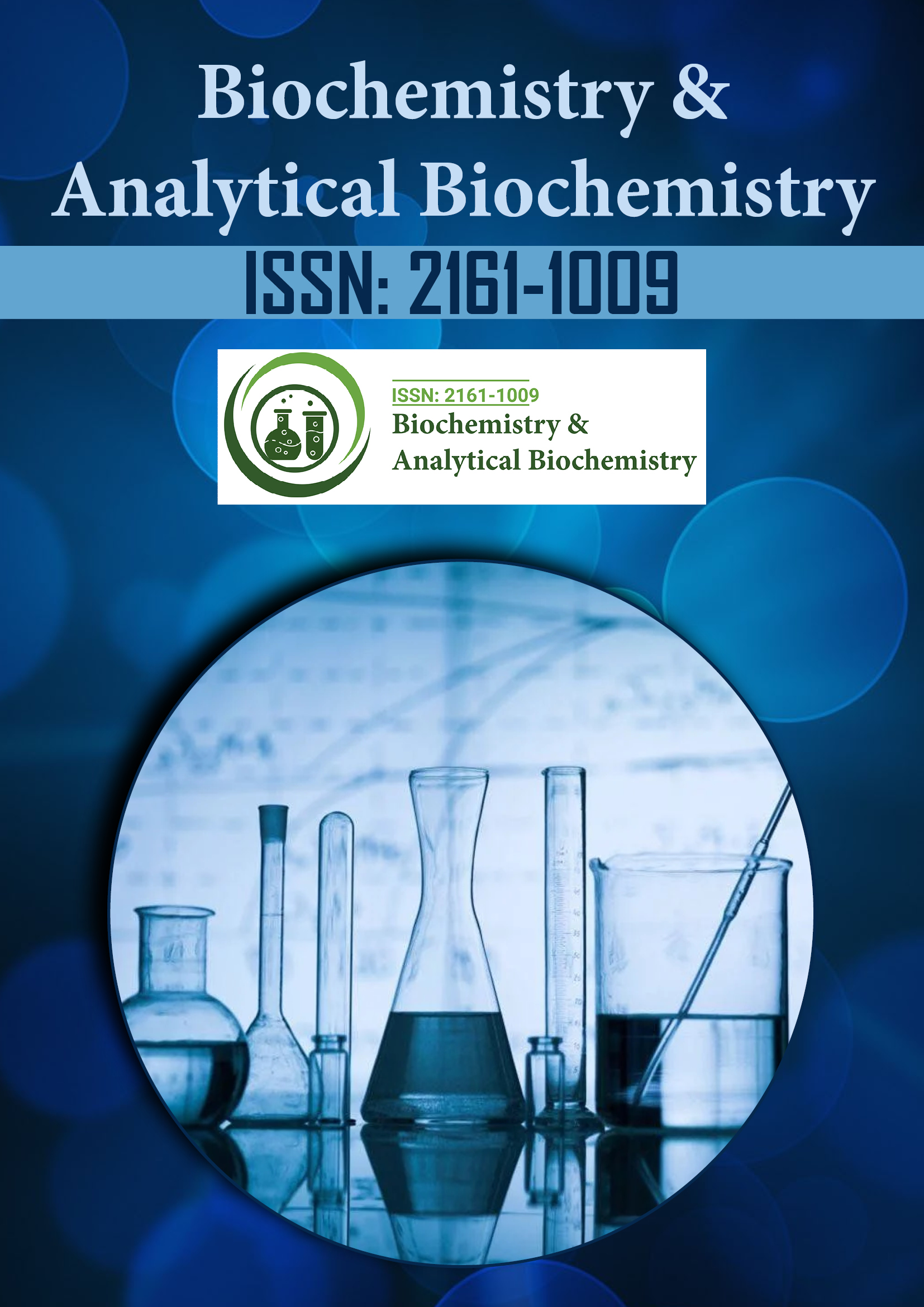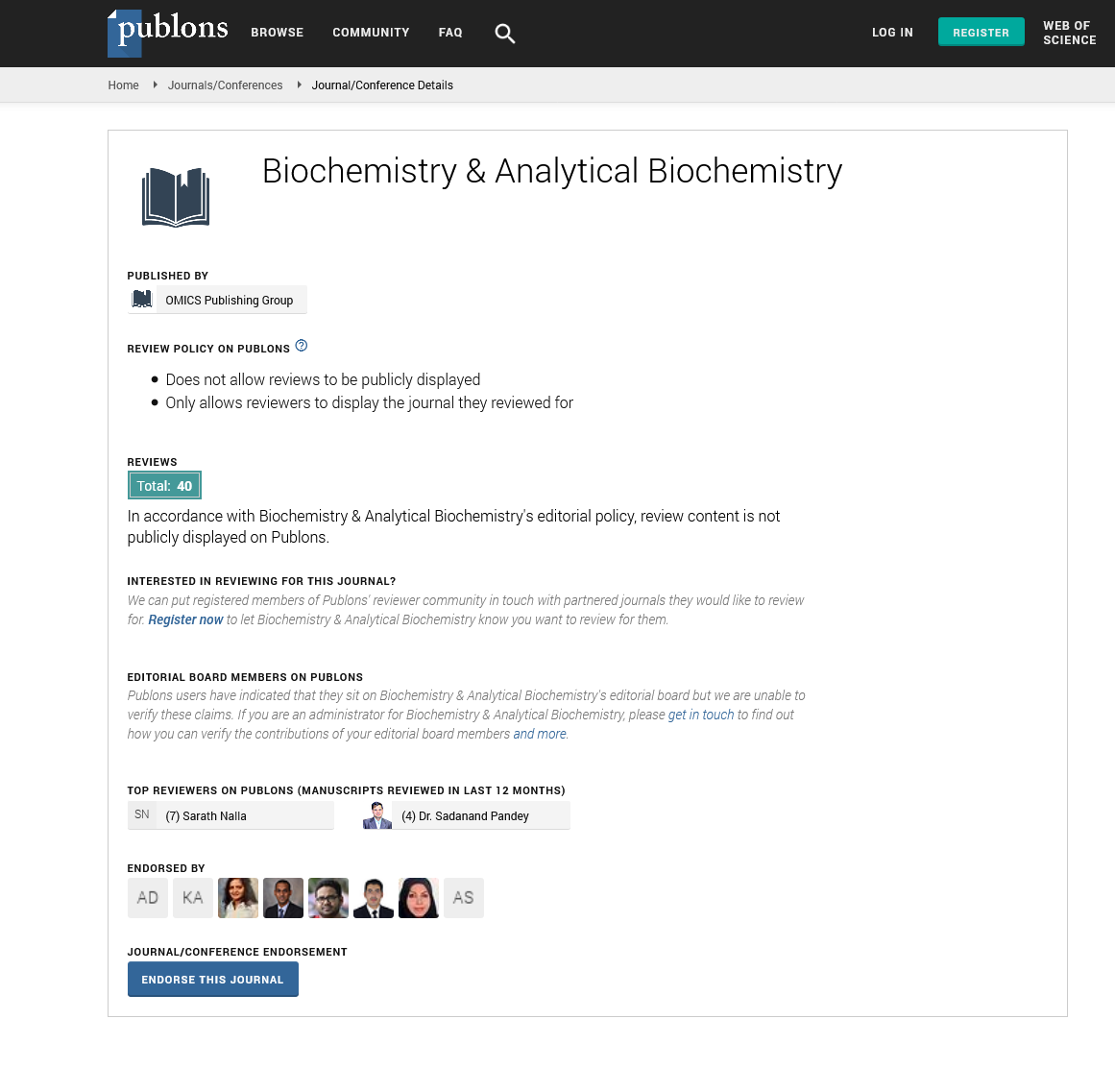Indexed In
- Open J Gate
- Genamics JournalSeek
- ResearchBible
- RefSeek
- Directory of Research Journal Indexing (DRJI)
- Hamdard University
- EBSCO A-Z
- OCLC- WorldCat
- Scholarsteer
- Publons
- MIAR
- Euro Pub
- Google Scholar
Useful Links
Share This Page
Journal Flyer

Open Access Journals
- Agri and Aquaculture
- Biochemistry
- Bioinformatics & Systems Biology
- Business & Management
- Chemistry
- Clinical Sciences
- Engineering
- Food & Nutrition
- General Science
- Genetics & Molecular Biology
- Immunology & Microbiology
- Medical Sciences
- Neuroscience & Psychology
- Nursing & Health Care
- Pharmaceutical Sciences
Commentary - (2024) Volume 13, Issue 4
Emerging Techniques in Protein Analysis: From Mass Spectrometry to NMR Spectroscopy
Emily Johnson*Received: 27-Nov-2024, Manuscript No. BABCR-24-28126; Editor assigned: 29-Nov-2024, Pre QC No. BABCR-24-28126 (PQ); Reviewed: 13-Dec-2024, QC No. BABCR-24-28126; Revised: 20-Dec-2024, Manuscript No. BABCR-24-28126 (R); Published: 27-Dec-2024, DOI: 10.35248/2161-1009.24.13.559
Description
Emerging techniques in protein analysis have revolutionized ability to study the structure, function, and dynamics of proteins in detail. These techniques are essential for understanding the roles proteins play in cellular processes, disease mechanisms, and therapeutic development. Among the most powerful methods for protein analysis are Mass Spectrometry (MS) and Nuclear Magnetic Resonance (NMR) spectroscopy, both of which have advanced significantly in recent years, enabling researchers to uncover intricate details about protein structure, interactions, and modifications.
Mass spectrometry, particularly high-resolution MS, has become a basis of proteomics research. It provides the ability to clearly identify proteins, quantify their abundance, and determine Post- Translational Modifications (PTMs) such as phosphorylation, glycosylation, and acetylation. One of the most significant advances in MS is the development of tandem mass spectrometry (MS/MS), which allows for the sequencing of peptides and the identification of complex protein mixtures. This technique involves fragmenting peptides into smaller ions and analyzing their mass-to-charge ratios to determine the sequence and structure of the original protein. Additionally, advances in ionization techniques, such as Electrospray Ionization (ESI) and Matrix- Assisted Laser Desorption/Ionization (MALDI), have enhanced the sensitivity and accuracy of mass spectrometry, allowing researchers to analyze proteins from even the smallest sample quantities.
One of the most important applications of mass spectrometry is in the study of Protein-Protein Interactions (PPIs). Mass spectrometrybased techniques such as affinity purification followed by MS allow for the identification of proteins that interact with a target protein, providing insight into the cellular networks and pathways in which they are involved. The ability to map these interaction networks is key for understanding cellular signaling, disease mechanisms, and identifying potential therapeutic targets. Moreover, MS plays a pivotal role in identifying biomarkers for diseases such as cancer, neurodegenerative disorders, and autoimmune conditions, where protein alterations often serve as early indicators of pathology.
NMR spectroscopy is another technique in protein analysis that provides atomic-level information about protein structure and dynamics in solution. Unlike crystallography, which requires protein crystallization, NMR spectroscopy can be used to analyze proteins in their native, solution-state environments, providing more biologically relevant data. Recent advancements in NMR technology have increased the sensitivity and resolution of protein studies, enabling the determination of high-resolution structures for larger proteins and protein complexes that were previously challenging to analyze.
NMR spectroscopy works by detecting the magnetic properties of atomic nuclei within a protein. By applying a strong magnetic field and radiofrequency pulses, researchers can gather information about the distance between atoms, their chemical environments, and their interactions. One of the key strengths of NMR is its ability to study protein dynamics, as it can track conformational changes, folding events, and ligand binding in real-time. This makes NMR an invaluable tool for studying protein folding and misfolding, which are central to many neurodegenerative diseases, such as Alzheimer's and Parkinson's.
One of the emerging techniques in NMR is the study of proteinligand interactions, where the binding of small molecules or other macromolecules to a protein can be monitored in realtime. This approach has significant implications for drug discovery, as it allows for the identification of potential drug candidates that may modulate protein function or disrupt pathological protein interactions. Moreover, advancements in multidimensional NMR spectroscopy have allowed for the analysis of larger protein complexes, further expanding the scope of NMR in structural biology.
The combination of mass spectrometry and NMR spectroscopy is particularly powerful, as it allows for a comprehensive analysis of proteins from multiple angles. MS provides detailed information on protein composition, modifications, and interactions, while NMR provides high-resolution structural data and dynamic information. Together, these techniques offer a holistic view of protein function, enabling the identification of novel drug targets and the development of therapeutics that can modulate protein function at the molecular level.
Citation: Johnson E (2024). Emerging Techniques in Protein Analysis: Mass Spectrometry to NMR Spectroscopy. Biochem Anal Biochem. 13:559.
Copyright: © 2024 Johnson E. This is an open access article distributed under the terms of the Creative Commons Attribution License, which permits unrestricted use, distribution, and reproduction in any medium, provided the original author and source are credited.

